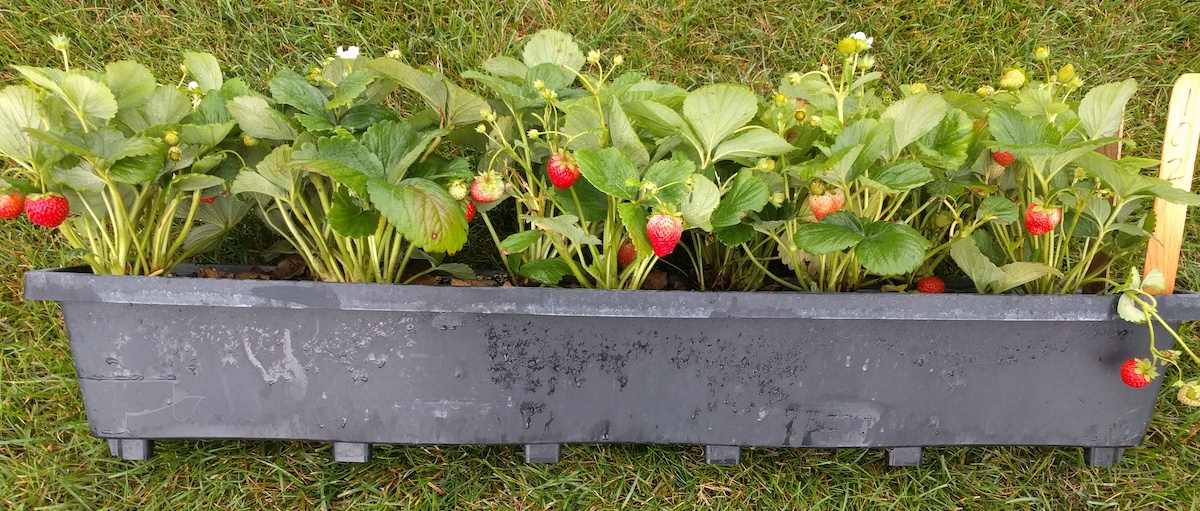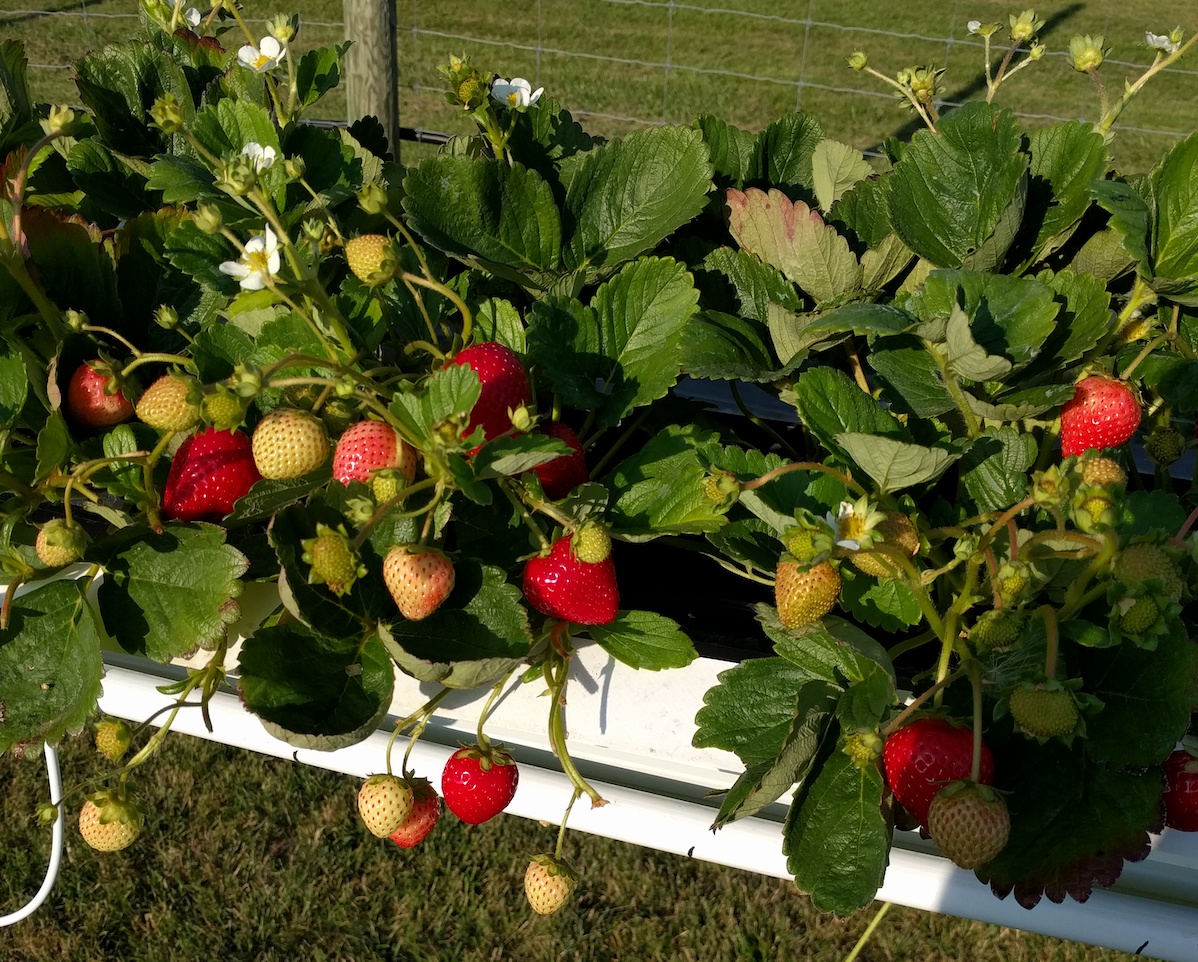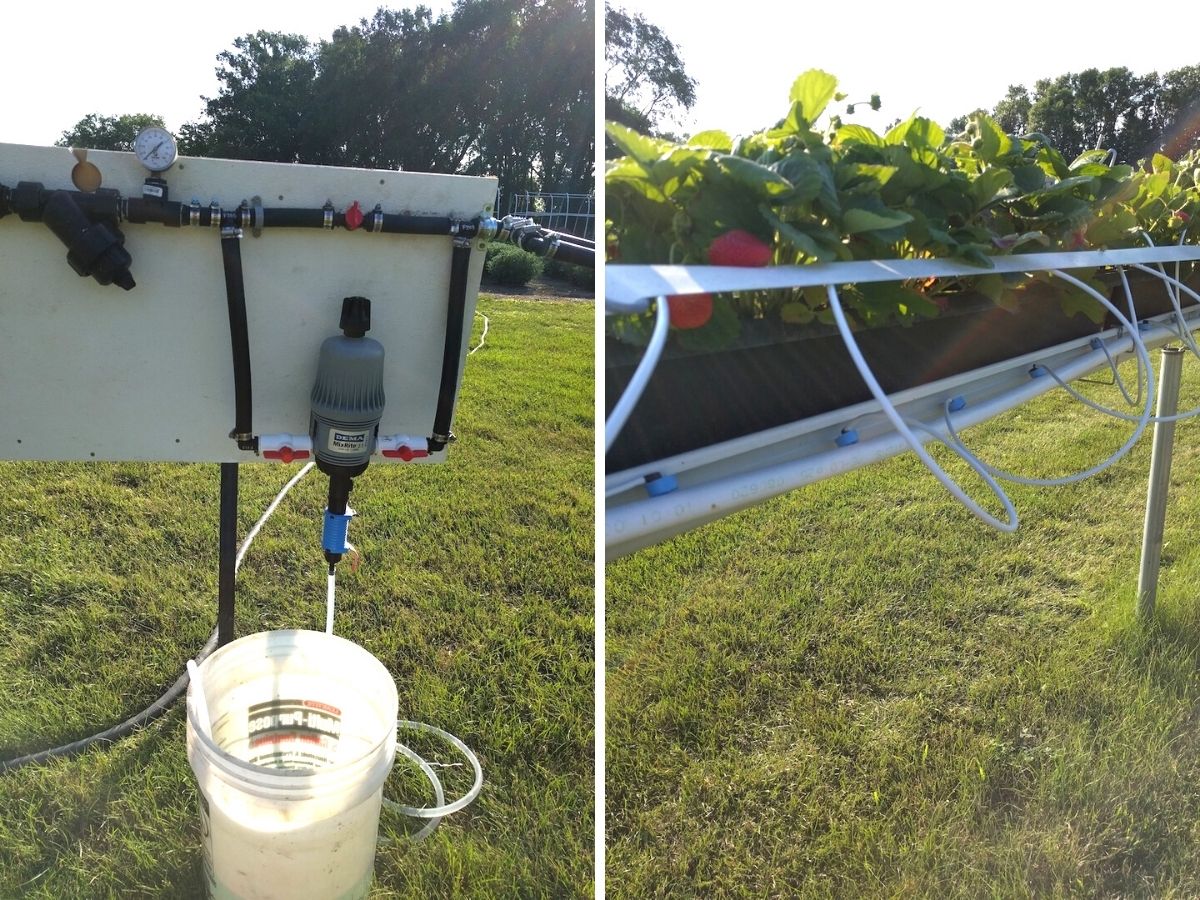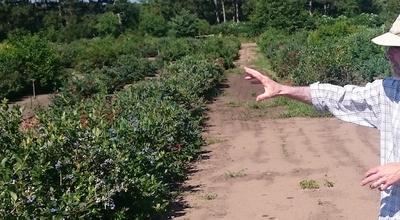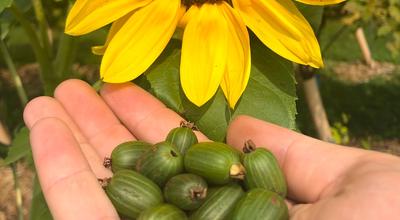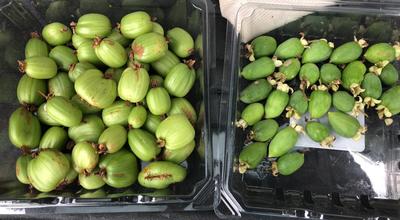Looking beyond day-neutrals
Day-neutral strawberry varieties have already greatly extended the Minnesota strawberry production season that was traditionally from June into July to July through October. However, this extended season has also come with new challenges such as soil borne diseases and insect damage that typically occur later in the growing season. These issues were not as prominent during the traditional strawberry production season. One way we can address these problems is by exploring new production systems with the goal of making production less labor intensive while still producing high quality fruit in a more sustainable way.
Getting up off the ground
During the 2020 and 2021 growing seasons, we are exploring a tabletop growing system for day-neutral strawberries. Plants are grown in troughs which sit in a gutter that is raised several feet off the ground, about waist height, which is where it gets the nickname “tabletop”. This raised growing system will not have the production challenges of weed control or soil borne diseases. The system produces very clean fruit that is harvested quickly and easily. A gutter system also allows for early planting of the strawberry plants as you are not dependent on soils drying out and warming up. Another benefit of this raised gutter system is that it can be installed on marginal land that wouldn’t normally be used for agriculture. The only requirement is that it must be located near a water source that is appropriate for irrigation. This system will allow new producers to get started in strawberry production who wouldn’t normally have the land to produce berries, which will result in more locally grown strawberries.
A closer look at our research
Now, to get into the specifics of the project. Trials are taking place at West Central Research and Outreach Center in Morris, MN and at the UMN St. Paul Campus. At both of these sites we are testing two different growing substrates, one is organic and one is not. These substrates are primarily composed of peat moss. There are 12 troughs filled with organic substrate and 12 with non-organic substrate. Each trough is 3 feet long, 6 inches deep and contains 9 plants. In addition to trialing two media, we are also using two day-neutral strawberry varieties, Cabrillo and Albion.
Precise irrigation and fertilizing
Since the strawberry plants have a limited root system in the troughs, they must be regularly fertilized to maintain plant health and production. This is done using a fertigation system that adds a small amount of fertilizer each time the plants are irrigated. The injector takes the fertilizer solution and injects it to the irrigation lines. The irrigation system provides water and nutrients directly to the plant’s roots as shown here.
Goals of our research
Overall, the objectives of this project are to determine:
- If the raised growing system is feasible in Minnesota.
- If the system can be used by both organic and conventional farmers.
- How well the different varieties produce in this new system.
We have just recently started harvesting berries from this system, and we’re excited to update you with our findings!
Acknowledgements
Thanks to project personnel Steve Poppe, Dr. Emily Hoover, Dr. Neil Anderson, Lindsey Miller, Emily Tepe, Dr. Andrew Petran of Twin Cities Berry Co., and Jeff and Jane Way of Ida Valley Farm.
This project is funded by the Minnesota Department of Agriculture and made possible through the University of Minnesota West Central Research and Outreach Center and Department of Horticultural Science. Thanks to JR Peters, Inc. for supplying fertilizers, Berger Horticultural Products for supplying the growing media, and Meteor Systems for supplying the materials necessary for building this growing system.
Mention of particular businesses or products does not imply an endorsement by the University of Minnesota, but is intended for informational and acknowledgement purposes only.

